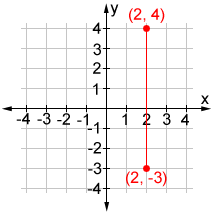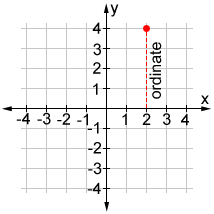Y coordinate
The y-coordinate is a number that describes the vertical position of a point in terms of distance and direction along the y-axis. It is the second number in both an ordered pair (x, y) and ordered triple (x, y, z) in a 2D rectangular coordinate plane (shown below) and a 3D coordinate plane, respectively.

The y-coordinates for points A and B, shown in the coordinate plane above, are -3 and 3, respectively.
Measuring vertical distance
The length of a vertical line segment can be determined by taking the absolute value of the difference between the y-coordinates of its endpoints.

While you can count 7 units along the y-axis from one endpoint to the other to determine the length of the line segment graphed above, it can be more efficient to take the absolute value of the difference (particularly with larger distances): |4 - (-3)| = |7| = 7 units or |-3 - 4| = |-7| = 7 units.
Did you know?
Although it is not used much anymore, the y-coordinate of a point is also referred to as the ordinate (the x-coordinate is referred to as the abscissa).

The ordinate of a point describes its vertical position relative to the origin or x-axis. If the ordinate is positive, as in the figure above, it is above the origin or x-axis. If it is negative, as in the figure below, it is below the origin or x-axis. In the figure above, the ordinate is 4 units above the origin or x-axis (+4), and in the figure below, it is 4 units below the origin or x-axis (-4).

